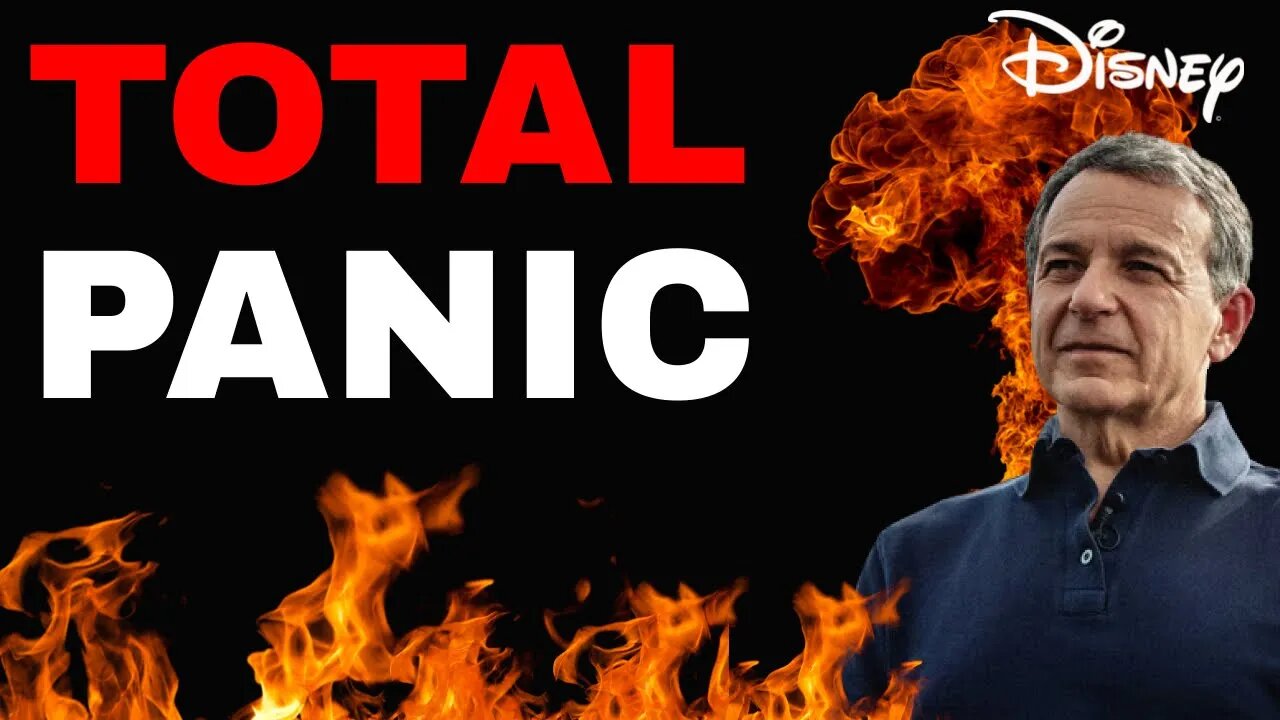Premium Only Content

TOTAL PANIC AT DISNEY! Must Fix Streaming But They LOSE MONEY On Every New Subscriber!
Disney is losing billions on streaming ($4 billion in 2022) and likely even more than that (accounting tricks). Every new subscriber they add makes them lose more money (revenue actually went down as their subscriber numbers went up!) Board of Directors panicked and fired Bob Chapek, but now what can Bob Iger do to fix a mess he helped create?
PLAYLIST 80 VIDEOS: WARNER BROTHERS DISCOVERY & DAVID ZASLAV
https://www.youtube.com/playlist?list=PLUPkiRW84R1gxDL-u2P1Ac4bE5bONlHix
SUBSCRIBE TO ADAM POST SPEAKS:
https://www.youtube.com/c/AdamPostSpeaks
Follow ADAM POST on Twitter:
https://twitter.com/comicswelove
TOTAL PANIC AT DISNEY! Must Fix Streaming But They LOSE MONEY On Every New Subscriber!
The Iger+ Streaming Strategy
https://puck.news/the-iger-streaming-strategy/
How does Bob Iger fix streaming? That’s the main question that people I’ve talked to in Hollywood want answered, following his re-emergence at Disney and the abrupt defenestration of Bob Chapek as C.E.O. That query is typically followed by a pause and then an important supplementary question: What, exactly, is wrong with Disney streaming, anyway?
Political blunders aside, Chapek was ousted largely on account of the board’s lack of confidence in his ability to turn around Disney’s streaming business after it posted a loss of $1.5 billion in the fourth quarter. And yet Chapek was largely following the expensive growth playbook that his predecessor set in motion. Remember, it was Iger who launched Disney+ in 2019 and acquired control of Hulu while purchasing most of 21st Century Fox. It was Iger who bought BAMTech, the streaming tech company, which got this whole ball rolling.
From a top-line subscription perspective, the Disney playbook appeared to be working just fine. The company has more than 164 million Disney+ subscribers—yes, they’re triple-counting bundle subscriptions in that number—and has also enjoyed significant year-over-year growth on both ESPN+ and Hulu. Meanwhile, Disney+ has become one of a select few destination platforms thanks to its mega-popular franchises. Disney also boasts the largest share of audience demand of the major companies operating in streaming, according to Parrot Analytics, where I work as director of strategy; Hulu has the largest on-platform demand share (when looking at the entire catalog) in the U.S., and Disney+ has the third highest demand share for originals.
But all this success has come at a price. Disney+ added more than 12 million subscribers in Q4, but direct-to-consumer revenue declined from $5.1 billion in the previous quarter to $4.9 billion. Year-over-year operating expenses jumped from $0.8 billion to $1.5 billion, in part as Disney pushed to bring all its titles back in-house rather than license them to partners. It may be a necessary long-term decision, but it cost the company $200 million in Q1 alone. Average revenue per user also decreased in various regions in the past quarter, with a notable decrease of 10 percent in Disney+’s domestic market. And with the “vast majority” of new signups in the US coming from the bundle option in Disney’s fourth quarter, according to Chapek, we know less than ever about how usage and average revenue per user (ARPU) actually breaks down across all three platforms in its core market.
So how can Iger tweak his original plan to keep Disney’s top line numbers growing while stanching losses in a more challenged, more crowded streaming economy than the one he left behind? Some of the answers will make the Street happy; others will require walking back some of Iger’s own original thinking. In fact, it’s likely going to look different from the thesis Iger articulated before his temporary retirement.
Triple Threat
Disney is a three-pronged streaming house. Disney+ is the flagship, of course, and it’s here that Iger and Chapek’s visions most diverged. Chapek saw a need for more adult content on Disney+ to appeal to non-Disney households, and he started to explore bringing more mature offerings to the platform. Iger, on the other hand, always envisioned Disney+ as an extension of everything that defines the brand: affordable, accessible, family-oriented, and multigenerational. When Disney+ launched in November 2019, it was Kevin Mayer, Disney’s head of streaming, who refuted the idea that non-family-friendly movies would wind up on Disney+. My two cents: Iger won’t explore expanding Disney+’s TAM by bringing in 20th Century horror movies, especially when titles like Prey help drive subscribers and engagement on Hulu. Content will expand beyond tentpole branding, but Disney+ isn’t going to compete with Netflix on steamy projects.
-
 2:21:20
2:21:20
Robert Gouveia
6 hours agoTrump Goes to SCOTUS! Judge CAVES on DOGE? Fani Willis Not Happy!
72K19 -
 20:41
20:41
Stephen Gardner
6 hours ago🔥You Won't BELIEVE What JUST Happened To Don Trump Jr.!!
66.8K121 -
 58:00
58:00
The StoneZONE with Roger Stone
4 hours agoEuropean Leaders Resist Trump Peace Overtures To Their Own Demise | The StoneZONE w/ Roger Stone
56.8K11 -
 9:29
9:29
AlaskanBallistics
6 hours ago $2.30 earnedWyoming Suppressors and Rifles at Shot Show 2025
52.9K2 -
 1:06:40
1:06:40
Donald Trump Jr.
10 hours agoThe Left is Taking one L After Another, Live with Michael Knowles | Triggered Ep. 217
150K103 -
 47:17
47:17
Kimberly Guilfoyle
10 hours agoWoke Gets DOGE’d, Live with AJ Rice & Jarrett Stepman | Ep. 197
112K41 -
 20:11
20:11
Candace Show Podcast
8 hours agoBecoming Brigitte: Candace Owens x Xavier Poussard | Ep 6
168K307 -
 8:25:38
8:25:38
Dr Disrespect
13 hours ago🔴LIVE - DR DISRESPECT - ELDEN RING DLC - REVENGE
179K21 -
 54:22
54:22
LFA TV
1 day agoThe End of the Trans-Atlantic Alliance | TRUMPET DAILY 2.17.25 7PM
40.9K6 -
 55:56
55:56
BIG NEM
11 hours agoUGLY COCO: The Rapper Who’s Tried EVERY PSYCHEDELIC 🌌
15.5K1